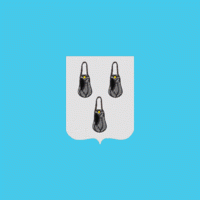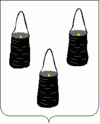Sumy
 |
 |
The city of Sumy was founded in the 1650s by the Cossacks within the region of Sloboda Ukraine.
Sumy was founded by the Cossack Herasym Kondratyev from Stavyshche, Bila Tserkva Regiment on the banks of the Psel River, a tributary of the Dnieper. The exact date of its foundation remains a subject of discussion (in 1652 or 1655). In 1656–58 at the site of the Sumyn early settlement, under the leadership of the Muscovite voivode K. Arsenyev, a city-fort was built that consisted of a fort and a grad (town).
In the 1670s, Sumy was expanded by adding a fortified posad (craftsmen town), after which it became the biggest fortress of Sloboda Ukraine. From 1658 Sumy was a center of the Sumy Cossack Regiment (military unit and local administrative division). In the 1680s unfortified suburbs began to develop around Sumy.
At the end of the 17th century, Sumy played a role as a collection point for Muscovite troops during the Crimean campaigns of 1687 and 1689. During the Great Northern War, from December 1708 to January 1709, the city was the stavka (headquarters) of the Muscovite Chief of Commander headed by Tsar Peter the Great. Established under the leadership of Prince A. Shakhovskoy, the Commission on streamlining the Sloboda Cossack regiments was located in 1734–43 in Sumy. From its establishment and until the liquidation of Cossackdom in Sloboda Ukraine in 1765, the Cossack officer family of Kondratyevs exercised great influence over the city.
Following the liquidation of the Cossack community in 1765, the Sumy Cossack Regiment as an administrative division was turned into Sumy Province of the newly created Sloboda Ukraine Governorate and the city of Sumy became its center. In 1780 Sumy was turned into a centre of Sumy uyezd. In 1786-89 the city was reformed by removing its city fort vallums.
After a period of stagnation (1765–1860s), Sumy began to transform into a big industrial and trade center with the Paul's Sugar-Refining Factory (est. 1869 by I.Kharytonenko) and the Sumy Engineering Workshops (est. 1896, producing equipment for sugar refineries). With the construction of a railroad Vorozhba – Merefa, the Sumy train station was built in the city in January 1877. Various families of philanthropist industrialists, the most famous of which were the Kharytonenkos, contributed greatly to the development of Sumy.
During the Revolution of 1905, Sumy was one of several areas which became famous throughout Russia for having established an independent peasant republic -the Sumy Republic was established by a peasant union.
During the German occupation of Ukraine during World War II (1941–1944), Sumy sustained heavy damage and was occupied from 10 October 1941 to 2 September 1943. The Germans operated a Nazi prison and a forced labour battalion for Jews in the city. After the war, the destroyed parts of the city were rebuilt.
On 24 February 2022, the first day of the 2022 Russian invasion of Ukraine, Sumy came under attack by Russian forces in the Battle of Sumy.
Map - Sumy
Map
Country - Ukraine
 |
 |
| Flag of Ukraine | |
During the Middle Ages, Ukraine was the site of early Slavic expansion and the area later became a key centre of East Slavic culture under the state of Kievan Rus', which emerged in the 9th century. The state eventually disintegrated into rival regional powers and was ultimately destroyed by the Mongol invasions of the 13th century. The area was then contested, divided, and ruled by a variety of external powers for the next 600 years, including the Polish–Lithuanian Commonwealth, the Austrian Empire, the Ottoman Empire, and the Tsardom of Russia. The Cossack Hetmanate emerged in central Ukraine in the 17th century, but was partitioned between Russia and Poland, and ultimately absorbed by the Russian Empire. Ukrainian nationalism developed, and following the Russian Revolution in 1917, the short-lived Ukrainian People's Republic was formed. The Bolsheviks consolidated control over much of the former empire and established the Ukrainian Soviet Socialist Republic, which became a constituent republic of the Soviet Union when it was formed in 1922. In the early 1930s, millions of Ukrainians died in the Holodomor, a man-made famine. During World War II, Ukraine was devastated by the German occupation.
Currency / Language
| ISO | Currency | Symbol | Significant figures |
|---|---|---|---|
| UAH | Ukrainian hryvnia | â‚´ | 2 |
| ISO | Language |
|---|---|
| HU | Hungarian language |
| PL | Polish language |
| RU | Russian language |
| UK | Ukrainian language |















